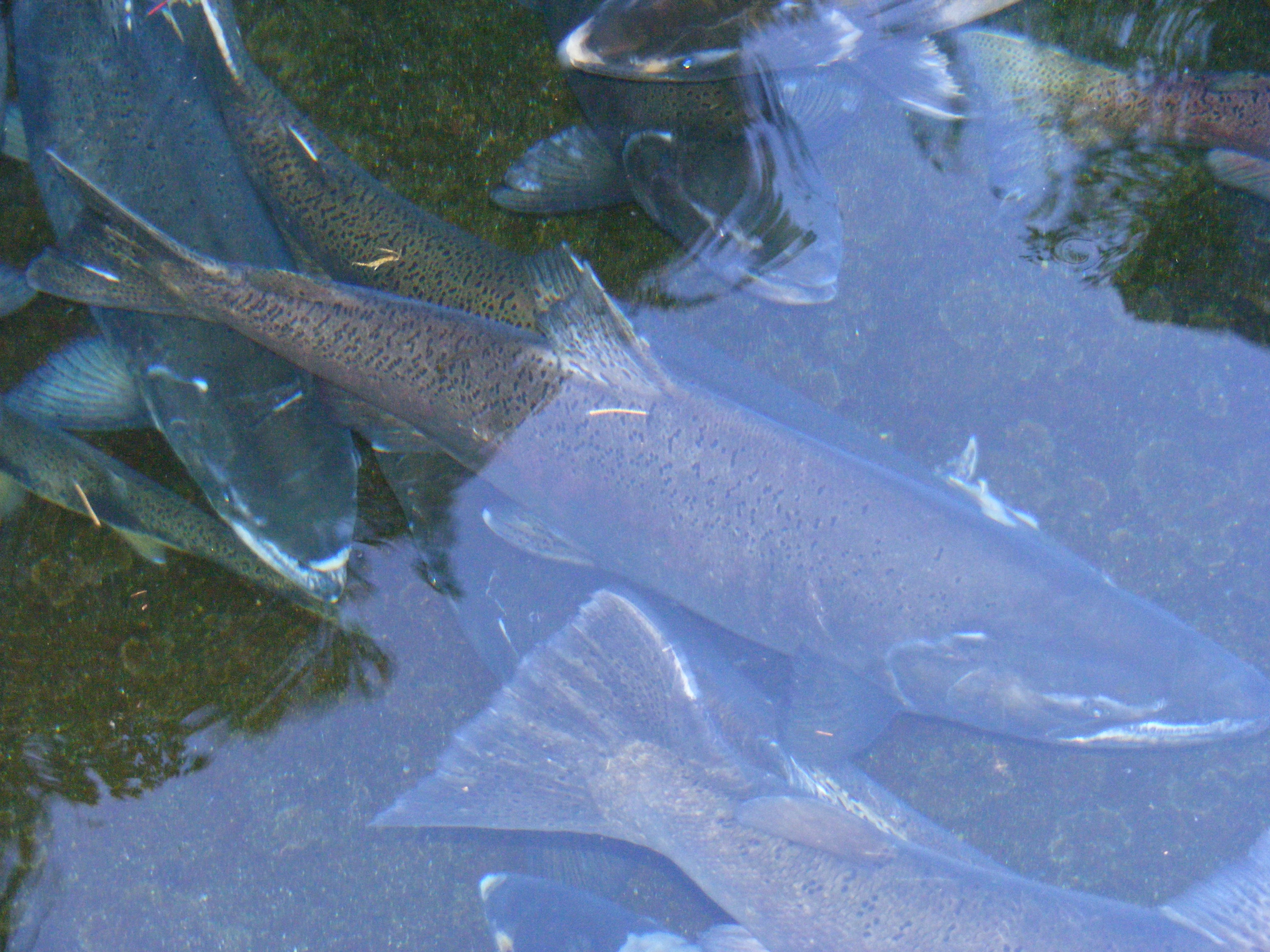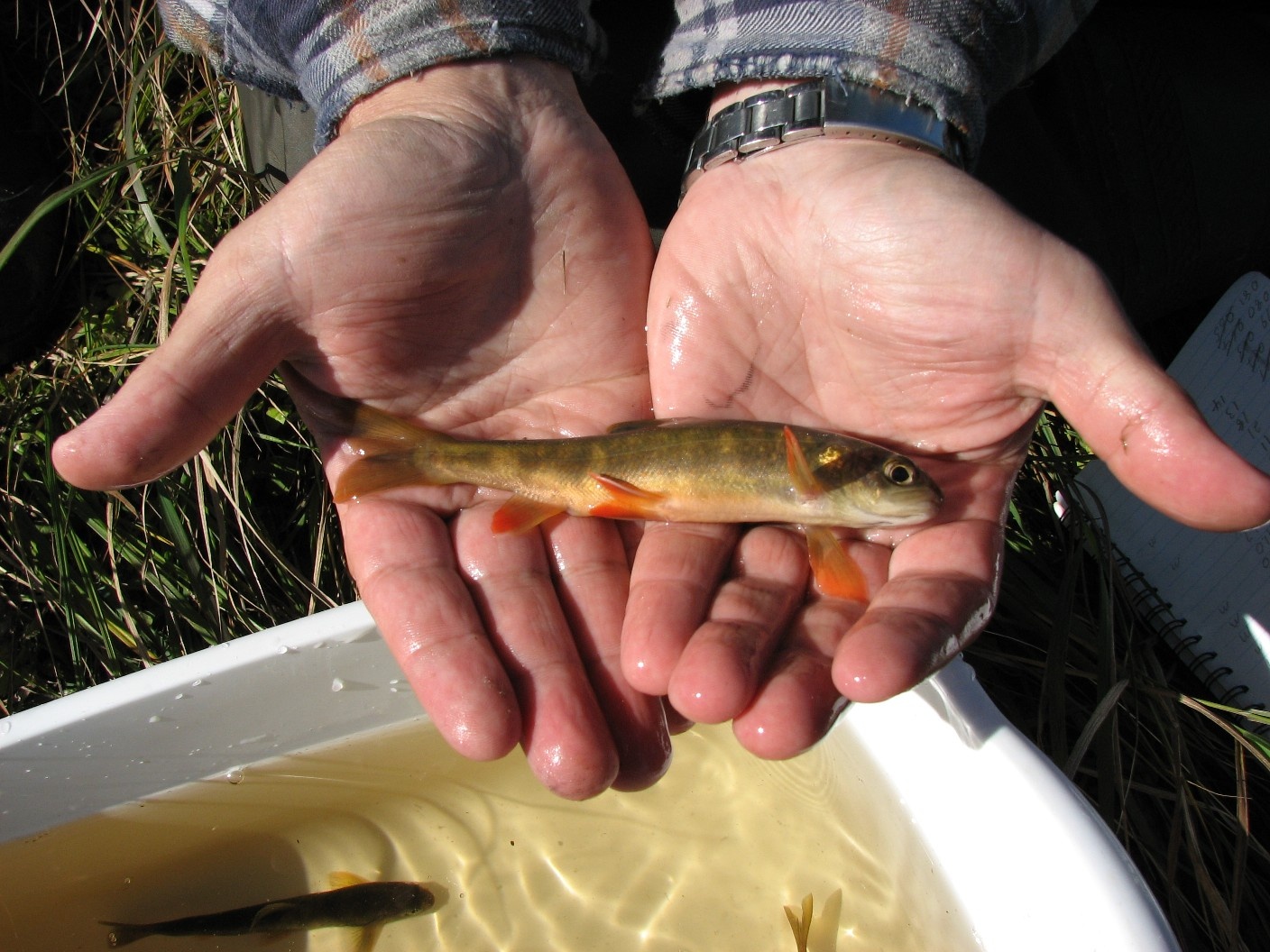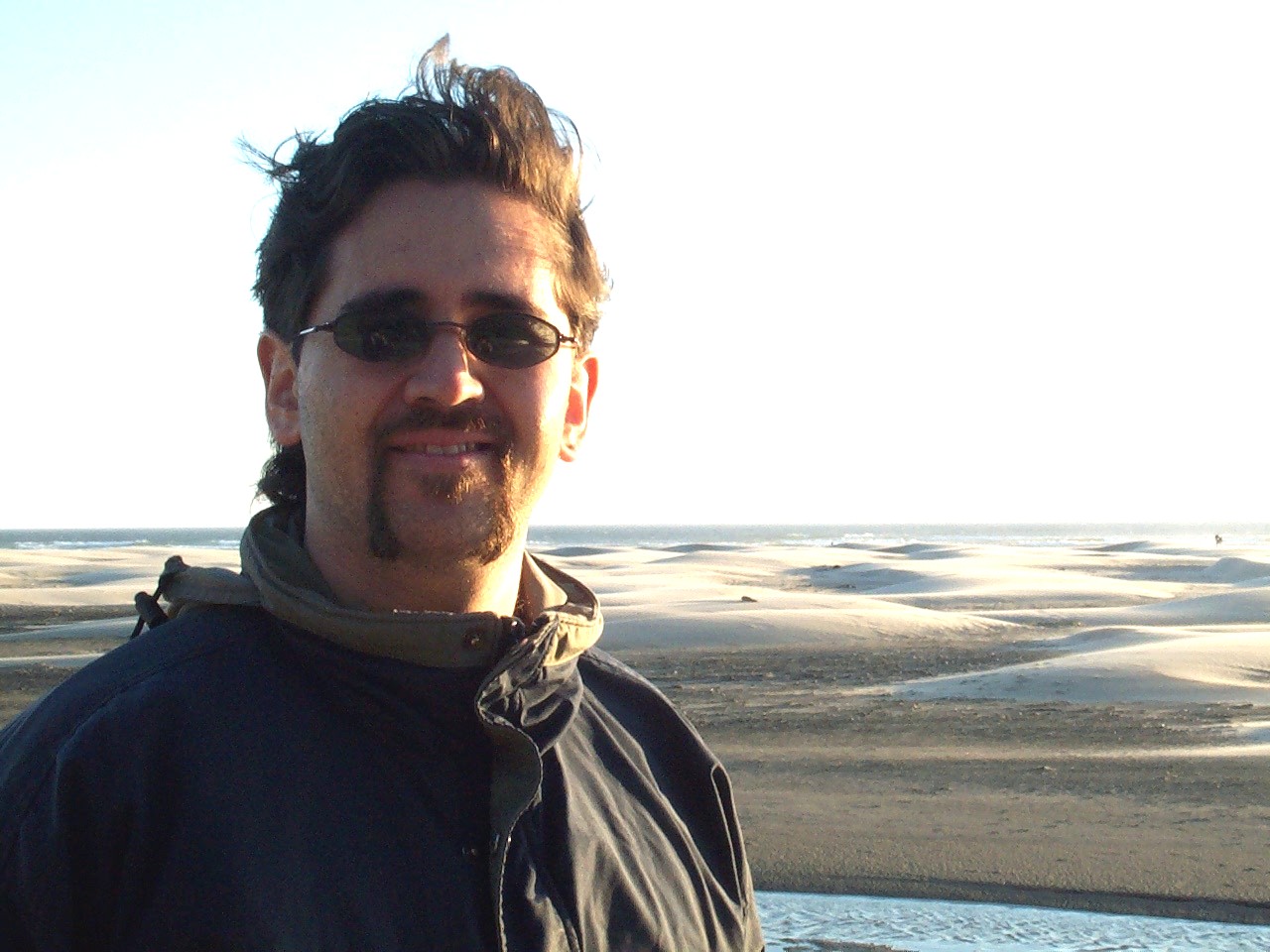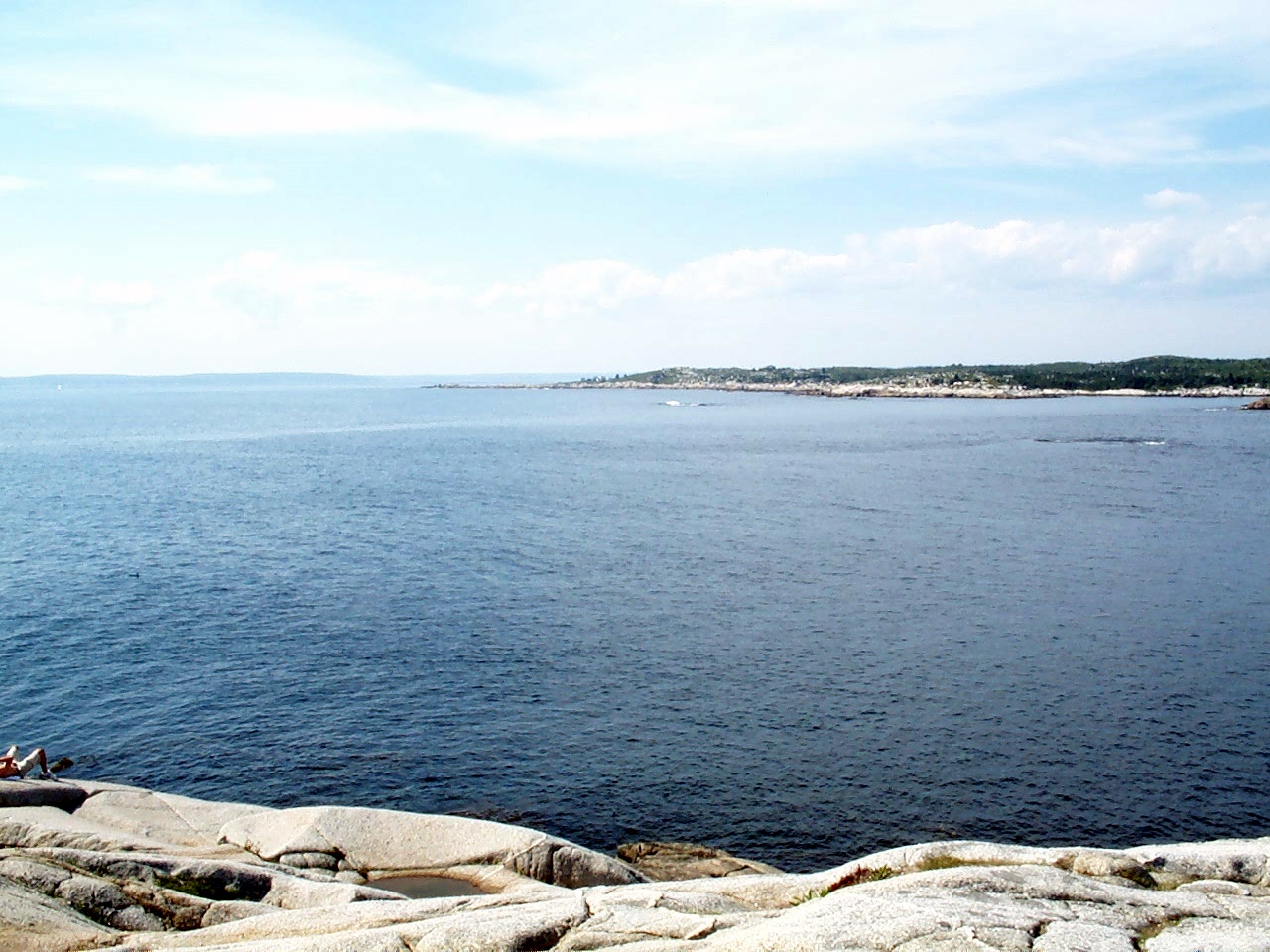Daniel Gómez Uchida
My
research uses genetic and genomic data to address ecological and
evolutionary questions among natural populations. Although I
have hitherto focused on
nonmodel aquatic organisms (mostly fishes), next generation sequencing
technology is now enabling unprecedented access to genomic resources
that a decade ago were exclusive to a few model species. Molecular
bioinformation allows inference of past
and contemporary factors responsible for
the
origin and maintenance of genetic diversity, which can be natural (climate, landscape, habitat quality and quantity, life-history) or anthropogenic in nature (overexploitation, habitat and population fragmentation). Collectively, they will affect a population's genetic
properties - namely size, gene flow, and inbreeding - and thus its persistence and ability to adapt. Assessing
and understanding these factors can help conservation biologists and
resource managers ensure long-term sustainability of ecologically
and economically important wild populations. So far my research has developed along three main lines:
 During my tenure at the International Program for Salmon Ecological
Genetics (IPSEG), School of Aquatic and Fishery Sciences (SAFS) of the University of Washington, I developed and applied genomic tools that can further our understanding on
how salmon populations diverge and adapt to discrete
environments wherein they reproduce. One initiative involves next generation sequencing of Chinook salmon (Oncorhynchus tshawytscha)
transcriptomes for single nucleotide polymophisms (SNPs) characterization. In partnership with the
Washington Department of Fish and Wildlife (WDFW), this research seeks to address fundamental management questions, such
as ascertaining the origin of Puget Sound Chinook salmon
populations known to have a shallow evolutionary history. Other projects encompass spatial and temporal analyses of SNP diversity among sockeye (Oncorhynchus nerka)
and chum salmon populations (Oncorhynchus keta) from Alaska. This is a joint initiative between
IPSEG, SAFS, and the Alaska Department of Fish and Game (ADFG) to
answer population-level questions related to (i) philopatry/dispersal,
(ii) local adaptation in the face of gene flow,
and (iii) temporal population stability and effective population size (Ne), all using a combination of population-, individual-, and coalescent-based methods.
During my tenure at the International Program for Salmon Ecological
Genetics (IPSEG), School of Aquatic and Fishery Sciences (SAFS) of the University of Washington, I developed and applied genomic tools that can further our understanding on
how salmon populations diverge and adapt to discrete
environments wherein they reproduce. One initiative involves next generation sequencing of Chinook salmon (Oncorhynchus tshawytscha)
transcriptomes for single nucleotide polymophisms (SNPs) characterization. In partnership with the
Washington Department of Fish and Wildlife (WDFW), this research seeks to address fundamental management questions, such
as ascertaining the origin of Puget Sound Chinook salmon
populations known to have a shallow evolutionary history. Other projects encompass spatial and temporal analyses of SNP diversity among sockeye (Oncorhynchus nerka)
and chum salmon populations (Oncorhynchus keta) from Alaska. This is a joint initiative between
IPSEG, SAFS, and the Alaska Department of Fish and Game (ADFG) to
answer population-level questions related to (i) philopatry/dispersal,
(ii) local adaptation in the face of gene flow,
and (iii) temporal population stability and effective population size (Ne), all using a combination of population-, individual-, and coalescent-based methods.
Molecular Ecology
 Landscape, habitat, and
ecological attributes shape the genetic properties of freshwater fish
populations. I addressed this topic using single and multispecies
approaches. Firstly, I analyzed the degree of reproductive isolation
between sympatric morphs of Arctic charr (Salvelinus alpinus)
from Gander Lake, Newfoundland. Divergent forms (also known
as ‘morphotypes’, or ‘ecotypes’) within populations are
characterized by
incomplete speciation and large differences in resource use (e.g., food, habitat, spawning grounds,
and/or migratory routes). Genetic monitoring of this and other species complexes can help us understand how speciation occurs and biodiversity is maintained. Secondly, I studied a pristine community of three salmonids (brook trout Salvelinus fontinalis, Atlantic salmon Salmo salar, and Arctic charr Salvelinus alpinus) distributed in
seven interconnected ponds in the highlands of Gros Morne National Park (Newfoundland, Canada).
Such comparative framework can gauge the importance of life-history and
landscape attributes impacting
genetic diversity and population size. In addition, holistic approaches
to
conservation of wildlife involving community- and ecosystem-based
frameworks
have been increasingly advertised as viable solutions in the
sustainability of
biological systems. This work is part of an ongoing collaboration with
Daniel E. Ruzzante and Thomas W. Knight that started during my tenure at Dalhousie
University (Canada) as Visiting Postdoctoral Fellow for Parks Canada.
Landscape, habitat, and
ecological attributes shape the genetic properties of freshwater fish
populations. I addressed this topic using single and multispecies
approaches. Firstly, I analyzed the degree of reproductive isolation
between sympatric morphs of Arctic charr (Salvelinus alpinus)
from Gander Lake, Newfoundland. Divergent forms (also known
as ‘morphotypes’, or ‘ecotypes’) within populations are
characterized by
incomplete speciation and large differences in resource use (e.g., food, habitat, spawning grounds,
and/or migratory routes). Genetic monitoring of this and other species complexes can help us understand how speciation occurs and biodiversity is maintained. Secondly, I studied a pristine community of three salmonids (brook trout Salvelinus fontinalis, Atlantic salmon Salmo salar, and Arctic charr Salvelinus alpinus) distributed in
seven interconnected ponds in the highlands of Gros Morne National Park (Newfoundland, Canada).
Such comparative framework can gauge the importance of life-history and
landscape attributes impacting
genetic diversity and population size. In addition, holistic approaches
to
conservation of wildlife involving community- and ecosystem-based
frameworks
have been increasingly advertised as viable solutions in the
sustainability of
biological systems. This work is part of an ongoing collaboration with
Daniel E. Ruzzante and Thomas W. Knight that started during my tenure at Dalhousie
University (Canada) as Visiting Postdoctoral Fellow for Parks Canada.
Conservation Genetics
 Worldwide declines of
economically important marine populations have primed the development of multidisciplinary
approaches to conservation. Among these disciplines, molecular population genetics provides an efficient and
inexpensive way to measure spatial scales of dispersal and local adaptation, as
well as estimates of effective population size (Ne).
Such information is pivotal for
the implementation of spatial planning in order to mitigate losses of abundance and genetic
diversity. I utilized a variety of molecular tools (allozymes, AFLPs,
and microsatellites) to investigate these and related topics in
populations of
Chilean hairy edible crab (Cancer setosus) during my master of science program at Universidad de
Concepcion (Chile) and The University of Hull (UK), and subsequently in species of Pacific rockfishes
(genus Sebastes) during my doctoral program at Oregon State University (USA). Here I focused on darkblotched (Sebastes crameri), canary (Sebastes pinniger), and black rockfish (Sebastes melanops) to address questions regarding
population connectivity employing genetic as well as ecological methods
(e.g., otolith microchemistry). Much of this work was done cooperatively with my major professor, Michael A. Banks, Jessica A. Miller, and
the Trawl Survey Team from NOAA Fisheries at the Hatfield Marine Science
Center in Newport, Oregon. Currently I am joining
expertise with
Vince P.
Buonaccorsi (Juniata College) to gauge the importance of Ne influencing gene flow and genetic diversity in a coastal rockfish assemblage off California.
Worldwide declines of
economically important marine populations have primed the development of multidisciplinary
approaches to conservation. Among these disciplines, molecular population genetics provides an efficient and
inexpensive way to measure spatial scales of dispersal and local adaptation, as
well as estimates of effective population size (Ne).
Such information is pivotal for
the implementation of spatial planning in order to mitigate losses of abundance and genetic
diversity. I utilized a variety of molecular tools (allozymes, AFLPs,
and microsatellites) to investigate these and related topics in
populations of
Chilean hairy edible crab (Cancer setosus) during my master of science program at Universidad de
Concepcion (Chile) and The University of Hull (UK), and subsequently in species of Pacific rockfishes
(genus Sebastes) during my doctoral program at Oregon State University (USA). Here I focused on darkblotched (Sebastes crameri), canary (Sebastes pinniger), and black rockfish (Sebastes melanops) to address questions regarding
population connectivity employing genetic as well as ecological methods
(e.g., otolith microchemistry). Much of this work was done cooperatively with my major professor, Michael A. Banks, Jessica A. Miller, and
the Trawl Survey Team from NOAA Fisheries at the Hatfield Marine Science
Center in Newport, Oregon. Currently I am joining
expertise with
Vince P.
Buonaccorsi (Juniata College) to gauge the importance of Ne influencing gene flow and genetic diversity in a coastal rockfish assemblage off California.




 Landscape, habitat, and
ecological attributes shape the genetic properties of freshwater fish
populations. I addressed this topic using single and multispecies
approaches. Firstly, I analyzed the degree of reproductive isolation
between sympatric morphs of Arctic charr (Salvelinus alpinus)
from Gander Lake, Newfoundland. Divergent forms (also known
as ‘morphotypes’, or ‘ecotypes’) within populations are
characterized by
incomplete speciation and large differences in resource use (e.g., food, habitat, spawning grounds,
and/or migratory routes). Genetic monitoring of this and other species complexes can help us understand how speciation occurs and biodiversity is maintained. Secondly, I studied a pristine community of three salmonids (brook trout Salvelinus fontinalis, Atlantic salmon Salmo salar, and Arctic charr Salvelinus alpinus) distributed in
seven interconnected ponds in the highlands of
Landscape, habitat, and
ecological attributes shape the genetic properties of freshwater fish
populations. I addressed this topic using single and multispecies
approaches. Firstly, I analyzed the degree of reproductive isolation
between sympatric morphs of Arctic charr (Salvelinus alpinus)
from Gander Lake, Newfoundland. Divergent forms (also known
as ‘morphotypes’, or ‘ecotypes’) within populations are
characterized by
incomplete speciation and large differences in resource use (e.g., food, habitat, spawning grounds,
and/or migratory routes). Genetic monitoring of this and other species complexes can help us understand how speciation occurs and biodiversity is maintained. Secondly, I studied a pristine community of three salmonids (brook trout Salvelinus fontinalis, Atlantic salmon Salmo salar, and Arctic charr Salvelinus alpinus) distributed in
seven interconnected ponds in the highlands of  Worldwide declines of
economically important marine populations have primed the development of multidisciplinary
approaches to conservation. Among these disciplines, molecular population genetics provides an efficient and
inexpensive way to measure spatial scales of dispersal and local adaptation, as
well as estimates of effective population size (Ne).
Such information is pivotal for
the implementation of spatial planning in order to mitigate losses of abundance and genetic
diversity. I utilized a variety of molecular tools (allozymes, AFLPs,
and microsatellites) to investigate these and related topics in
populations of
Chilean hairy edible crab (Cancer setosus) during my master of science program at Universidad de
Concepcion (Chile) and The University of Hull (UK), and subsequently in species of Pacific rockfishes
(genus Sebastes) during my doctoral program at Oregon State University (USA). Here I focused on darkblotched (Sebastes crameri), canary (Sebastes pinniger), and black rockfish (Sebastes melanops) to address questions regarding
population connectivity employing genetic as well as ecological methods
(e.g., otolith microchemistry). Much of this work was done cooperatively with my major professor, Michael A. Banks, Jessica A. Miller, and
the Trawl Survey Team from NOAA Fisheries at the Hatfield Marine Science
Center in Newport, Oregon. Currently I am joining
expertise with
Vince P.
Buonaccorsi (Juniata College) to gauge the importance of Ne influencing gene flow and genetic diversity in a coastal rockfish assemblage off California.
Worldwide declines of
economically important marine populations have primed the development of multidisciplinary
approaches to conservation. Among these disciplines, molecular population genetics provides an efficient and
inexpensive way to measure spatial scales of dispersal and local adaptation, as
well as estimates of effective population size (Ne).
Such information is pivotal for
the implementation of spatial planning in order to mitigate losses of abundance and genetic
diversity. I utilized a variety of molecular tools (allozymes, AFLPs,
and microsatellites) to investigate these and related topics in
populations of
Chilean hairy edible crab (Cancer setosus) during my master of science program at Universidad de
Concepcion (Chile) and The University of Hull (UK), and subsequently in species of Pacific rockfishes
(genus Sebastes) during my doctoral program at Oregon State University (USA). Here I focused on darkblotched (Sebastes crameri), canary (Sebastes pinniger), and black rockfish (Sebastes melanops) to address questions regarding
population connectivity employing genetic as well as ecological methods
(e.g., otolith microchemistry). Much of this work was done cooperatively with my major professor, Michael A. Banks, Jessica A. Miller, and
the Trawl Survey Team from NOAA Fisheries at the Hatfield Marine Science
Center in Newport, Oregon. Currently I am joining
expertise with
Vince P.
Buonaccorsi (Juniata College) to gauge the importance of Ne influencing gene flow and genetic diversity in a coastal rockfish assemblage off California.